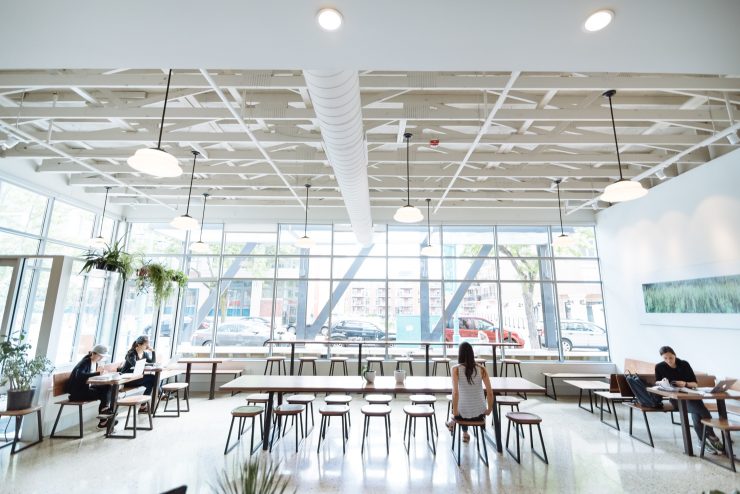
Milwaukee, Wisconsin may be better known for cold, foamy brews than cold brews, but this Third Coast metropolis has built a steady appetite for better and better coffee over the last decade. The growth has been in no small part credited to Scott Lucey, a barista-ambassador who came up through the ranks of prominent local chain Alterra Coffee Roasters (now Colectivo Coffee) and earned a name in the national coffee community through an irrepressible charm and a relentless curiosity for coffee knowledge—much of which he’s brought back to his home base and shared with the lucky coffee drinkers of Milwaukee. Lucey’s latest endeavor, a project he launched with Viroqua, WI-based Kickapoo Coffee in late 2015, joins the ranks of local players like Colectivo, Stone Creek Coffee Roasters, and Anodyne with a top-level cafe in Milwaukee’s Third Ward.
We talk with Lucey and Kickapoo Director of Marketing Jamie Lamonde about Kickapoo’s jump to the big city.
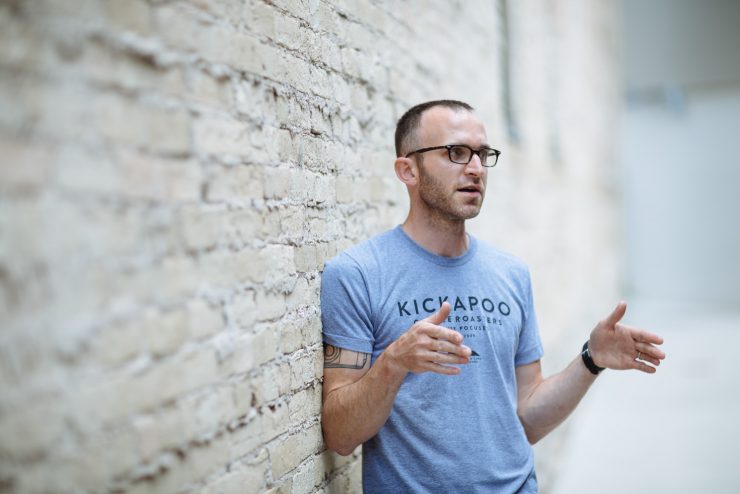
Scott Lucey
Tell us what inspired this cafe—what’s your overall vision for the space?
Jamie Lamonde: The vision for the space is a result of the partnership between Scott Lucey and Kickapoo Coffee Roasters co-owners, Caleb Nicholes and TJ Semanchin. Scott had long wanted to open his own cafe, and when he approached Caleb and TJ with the idea, we discovered we shared a similar vision: A space trimmed of “the fat,” not overloaded with distractions and aimed at putting coffee in front. The design is meant to be clean and fresh, minimal but not sterile. To keep the balance, we chose white walls and light-colored floors offset by the warmth of walnut furniture. Interior design concepts came primarily from Caleb with input from the team. Chris Dunn of Creative Ironwerks did all of the metal work, brackets, and signs, and the Wisconsin Amish did the majority of the woodwork. Putting it all together was a collective DIY effort.
In addition to the space itself, we also share a vision for the cafe to be an extension of the Kickapoo Coffee Roasters mission to provide benchmark quality coffees through truly direct relationships with small-scale, sustainable coffee farmers. We are dedicated to facilitating connections between farmers and our customers and to reciprocating through our support of efforts such as On the Ground’s Project Chiapas and Project Congo that give back to the coffee growing communities with which we’re partnered. The cafe allows us to be able to deepen these connections and continue to grow our mission.
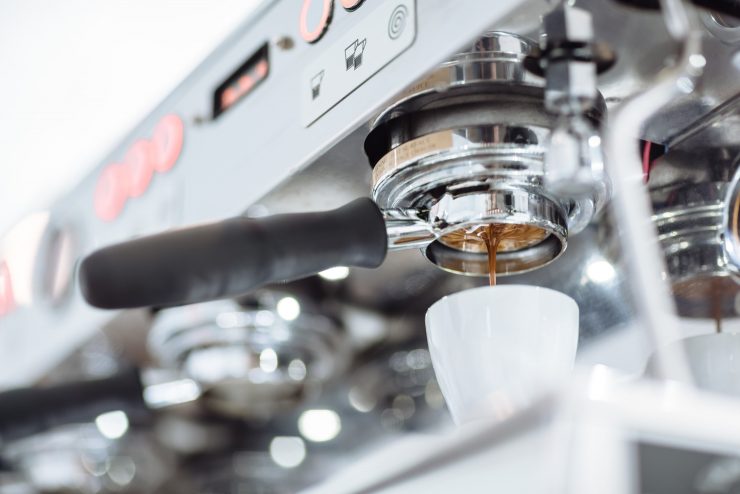
Please tell us about your gear choices—which machines are you using, and why?
Scott Lucey: For the espresso machine we’ve got a La Marzocco Linea PB with drain-tray scales. Fortunately Kickapoo had a preexisting relationship with La Marzocco. We had the great pleasure to test this machine in its prototype life and things went well. So well we’re keeping it.
Our espresso grinders are Nuova Simonelli Mythos One Clima-Pros. The coffee community had been speaking with positive regard about the consistency and ease of use of these grinders, so we decided to test them out. We spent about four or five months using them before the cafe opened and found that their consistency, particle size distribution, and ease of use make these grinders as fantastic as people say. Gone are the days of training baristas to expect to be changing their grind setting 20+ times in a shift.
For brewed coffee, we’re using the Mahlkönig EK 43. There’s always been an EK 43 in the Kickapoo Coffee lab, and as a team, we found that we like that grinder for many of the same reasons we like the Mythos as an espresso grinder. This grinder sits on the front counter, so the fact that it’s an aesthetically pleasing design is another main reason why that grinder is in the spotlight.
We have a FETCO 2132 under the counter. FETCOs have been the batch brewer of choice for Kickapoo Coffee’s wholesale world for their notable consistency and ease of use.
We’ve got a variety of other basic gear, like a Cadco Anna convection oven doing a healthy dose of baking and Square for our POS.
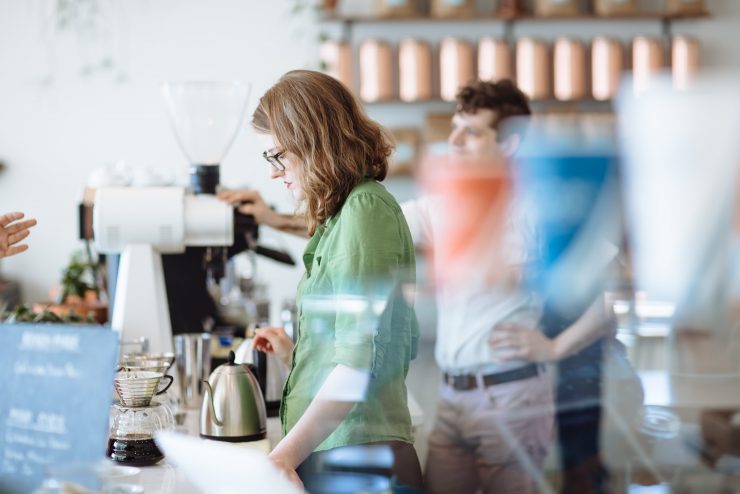
Are you using batch brew or pour-over or both?
JL: Both. We think it’s important that people know we use our batch brewers with the same scrutiny and quality control as we do our manual brewing and that the quality of our batch brews are actually the “standard holder” for how great our coffee should be tasting.
For pour-over, we’re using Kalitas and measuring brews with Acaia scales, which we have inset in the counter. The pour-overs serve as the best way to offer variety without waste. Periodically, we are also excited to offer limited release coffees made as pour-over only.
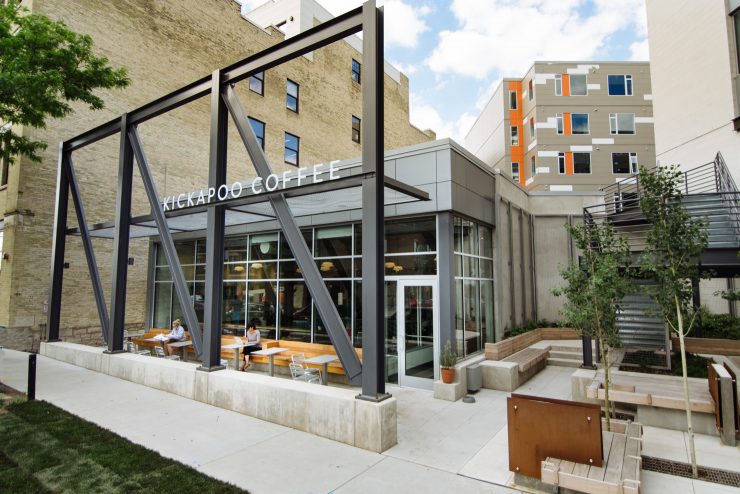
Will Kickapoo be opening more cafes in the future?
JL: We’ve partnered with Crumb bakery to build a second cafe in our roastery’s hometown of Viroqua, Wisconsin. Opening date TBD.
What food stuff is happening at the Milwaukee cafe?
JL: We’re definitely excited about food and feel that what we’re doing with food is really important. We have a small menu and are doing 100% from scratch. Biscuits are the heart and soul of our food program. We see those as great on their own with sides of maple butter, honey butter, lemon curd, or jam. For those interested in more, we’re also making three sandwiches served on biscuits: 1) roast beef, horseradish, onion, and sprouts, 2) smoked trout, roasted red pepper, crème fraîche, and sprouts, and 3) avocado, sun-dried tomato pesto, crème fraîche, carrots, and sprouts.
We’re also baking three kinds of cookies, two kinds of coffee cake (traditional sweet yellow cake, not overly-sweet cinnamon-roll-wannabes), granola, and granola bars.
We’re excited to see this food program live, breathe, and evolve through the seasons, fueled by some amazing food-passionate individuals.
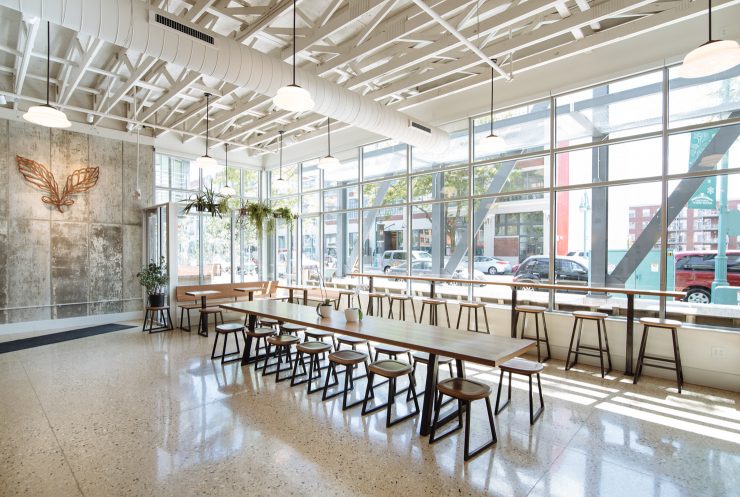
What are some of the challenges you’ve faced breaking in a new brand/cafe into the established Milwaukee scene?
SL: People often drill us about the ownership and business, “is it independent?” “is it local?” are common things we hear. We’re excited to bring the western fold of the state on to the eastern edge. I’m surprised how many Milwaukeeans haven’t taken that day trip out to the western side of the state, the landscape alone is worth it. On the contrary when we meet those who have spent some time in the Viroqua area they’re die-hard lovers and quick to call our cafe “home.” That means a lot to me!
One customer admitted to us that he thought we were a secret Starbucks. He was in the know about Starbucks’s no-name cafes and based on the look and feel he was sure we were product of a bigger company with deep pockets. It’s a unique compliment but I’ll take it.
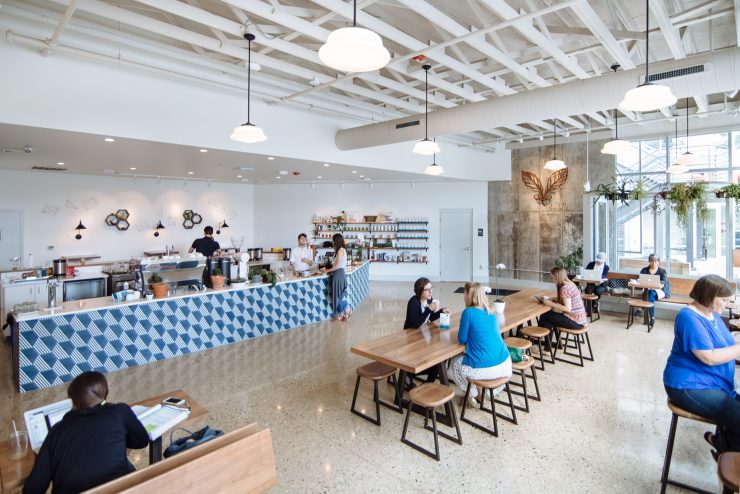
Tell us more about the neighborhood this cafe is located in.
SL: The “Historic Third Ward” is directly south of Milwaukee’s Downtown neighborhood. It’s a small 4 x 4 block square hugged on one side by Lake Michigan and Milwaukee’s lakefront, which includes the city’s art museum and Summerfest festival grounds.
Many call Milwaukee “the City of Festivals” as each week there’s a specific ethnic festival happening on those Summerfest grounds as well as Summerfest itself, which is a big huge beast of a music festival. We’ve made it through that now; Summerfest is the biggest music fest with perhaps the worst reputation, attracting ‘local tourists’ and a variety of people are in full-on party mode. Don’t get me wrong, I enjoy full party mode as often as I can but fellow business owners were confident to share their lack of excitement over ‘festival season.’
We’re on the western edge of the neighborhood and far enough away from festival grounds where we really didn’t notice anything up or down. Other than traffic at a standstill in the streets, business remained fairly regular. Our neighborhood also has the Milwaukee River flowing through it, which makes for an urban landscape similar to that which you see in Chicago only much, much smaller. The neighborhood is populated by boutique retail businesses, high-end restaurants, and other creative organizations like the Milwaukee Institute of Art & Design, which we’re right across the street from.
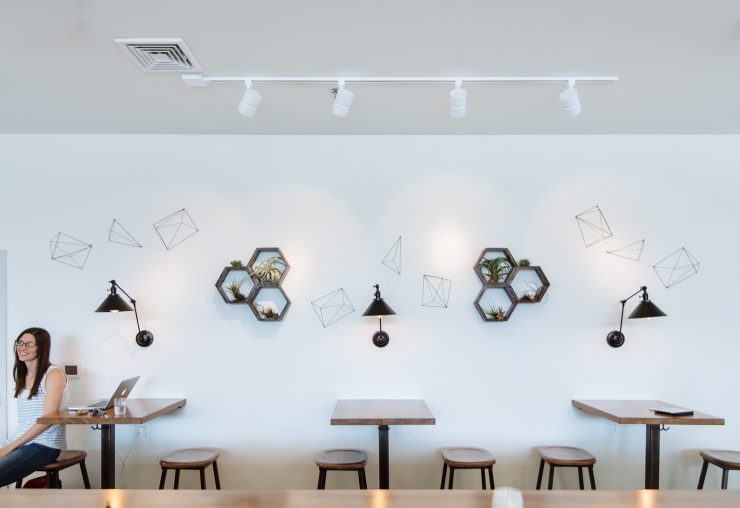
Scott, you helped establish that Milwaukee coffee scene with your work at Alterra/Colectivo. What’s the best thing about coffee in Milwaukee right now and where does it go next?
SL: I think the best thing about coffee in Milwaukee right now is that it seems as though a healthy number of consumers are aware of exceptionally high levels of quality and are excited to pursue it. We’ve seen some impressive allegiance to pour-overs, many of our regulars stick solely to what we’re brewing by hand. Similarly, I can also say that our whole bean prices are on the higher end of the spectrum, however, that hasn’t been problematic (we’re also doing 12oz bags vs. the 1lb most everyone else is doing). I really don’t have a great way to explain it other than to plainly say that people are excited to tell us they recognize the quality, taste the difference, and in the end feel great about our coffee.
For Milwaukee, our cafe is different because it’s bright, clean, and open. It’s fun to field compliments from people for straying away from the “cozy” or reclaimed nature of most other cafes. Even I never thought about it but a few times I heard people tell me they felt as though they could be more productive in our space. That’s fantastic! Where Milwaukee goes next with coffee is hopefully to allow some others to follow suit—not just in the cafe world but also with restaurants/bars.
Kickapoo Coffee Roasters is located at 232 East Erie Street, Milwaukee, Wisconsin. Visit their official website and follow them on Facebook, Twitter, and Instagram.
Photos courtesy of Ray + Kelly Photography.
The post Milwaukee: Inside Scott Lucey’s New Kickapoo Coffee Cafe appeared first on Sprudge.

